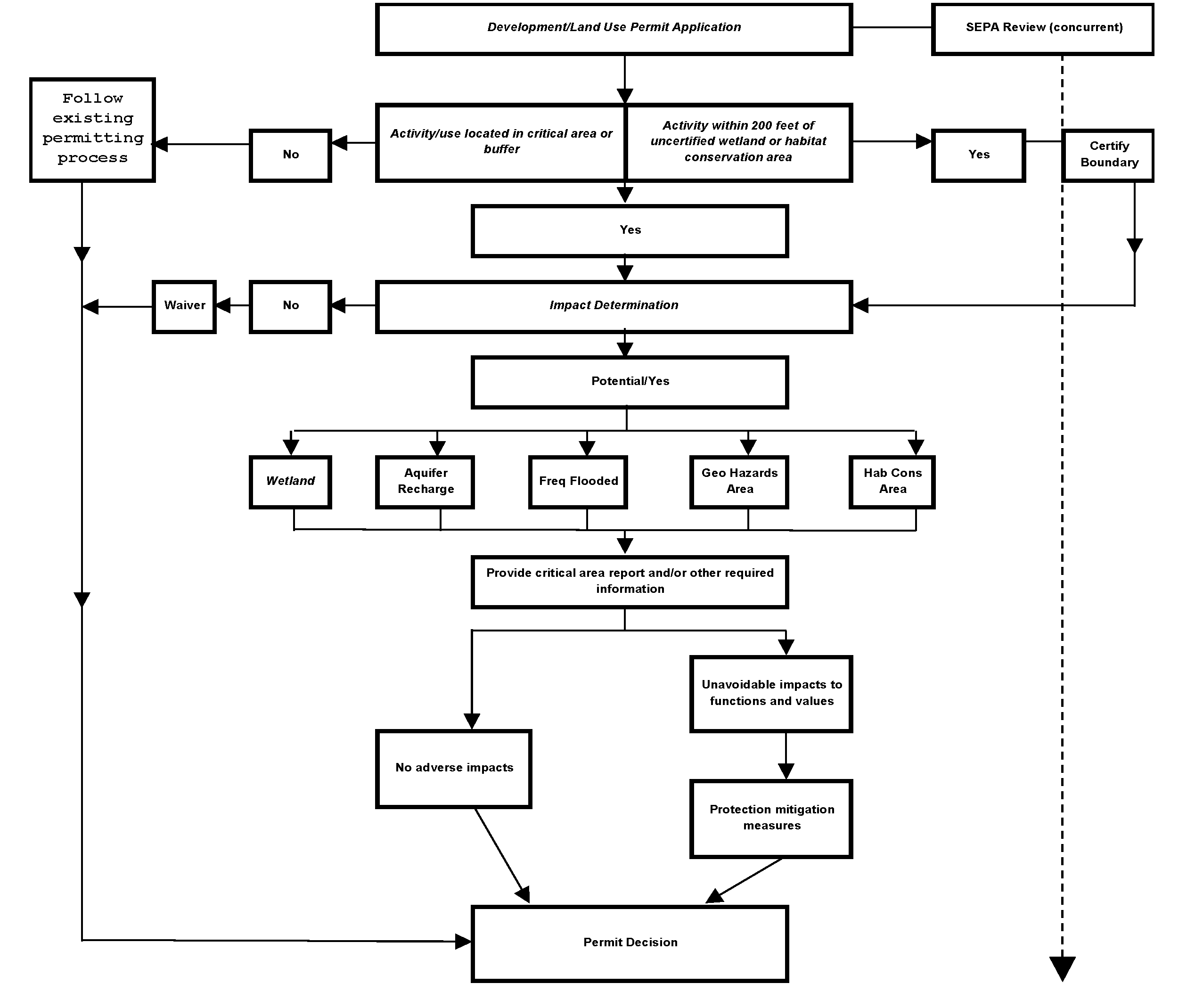16.50.130 General Review Process for Activities Affecting Critical Areas.
The city shall follow the process discussed below and as outlined in Figure 16.50.1.
(1) Initial Review. The Director of Community Development shall take the following actions during the initial review of a project application:
(a) verify the information submitted by the applicant for the applicable development permit;
(b) evaluate the project area and vicinity for critical areas;
(c) for wetlands or habitat conservation areas, require that their boundaries be verified by a qualified professional, and require that a map of such boundaries be submitted to the Director of Community Development as part of the application for the applicable development permit if the project:
(i) is within 200 feet of a wetland or habitat conservation area for which the boundaries have not been certified and depicted on the city critical area maps; and
(ii) will not be receiving a determination of unlikely impact as provided in Subsection 16.50.130(2); and
(d) determine whether the proposed project is likely to impact the functions or values of critical areas.
Figure 16.50.1. City of Pullman
Critical Areas Process/Other Permits

(2) Determination of Unlikely Impact. If the Director of Community Development determines that there are critical areas within or adjacent to the project area, but that the proposed activity is unlikely to degrade the functions or values of the critical area, the Director of Community Development may waive the requirement for a critical area report. A waiver may be granted if there is substantial evidence that all of the following criteria will be met:
(a) there will be no significant alteration of the critical area or buffer;
(b) the development proposal will not impact the critical area in a manner contrary to the purpose, intent, and requirements of this Chapter; and
(c) the proposal is consistent with other applicable regulations and standards.
The Director of Community Development shall prepare a written summary of the analysis and findings demanded within this Subsection prior to the city’s decision on the applicable development permit. This summary may take the form of a letter to the applicant.
(3) Determination of Likely Impact. If the Director of Community Development determines that the proposed project is likely to impact a critical area, the Director of Community Development shall:
(a) notify the applicant that a critical area report must be submitted prior to further review of the project, and indicate each of the critical area types that should be addressed;
(b) require a critical area report from the applicant that has been prepared by a qualified professional;
(c) review and evaluate the critical area report to determine whether the development proposal conforms to the purposes and standards of this Chapter;
(d) assess potential impacts to the critical area and determine if they are necessary and unavoidable;
(e) determine if any mitigation proposed by the applicant is sufficient to protect the functions and values of the critical area and public health, safety, and welfare concerns consistent with the purpose, intent, and requirements of this Chapter; and
(f) prepare a written summary of the analysis and findings demanded within this Subsection prior to the city’s decision on the applicable development permit. This summary may take the form of a letter to the applicant. Critical area review findings may result in: a) no adverse impacts to critical areas, b) a list of critical areas protection conditions for the applicable development permit, or c) denial of the applicable development permit based upon unavoidable impacts to critical areas functions and values. (Ord. 21-15 §6, 2021; Ord. 19-6 §6, 2019; Ord. 03-18 §14, 2003).